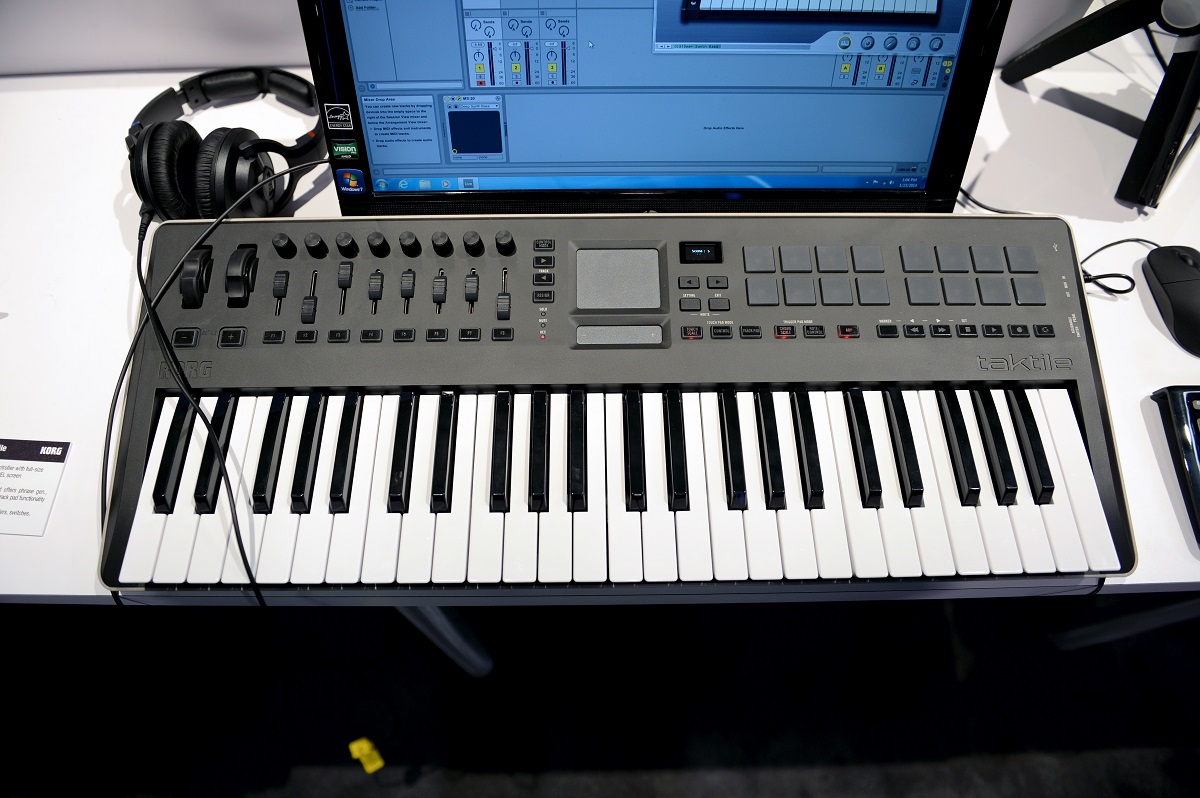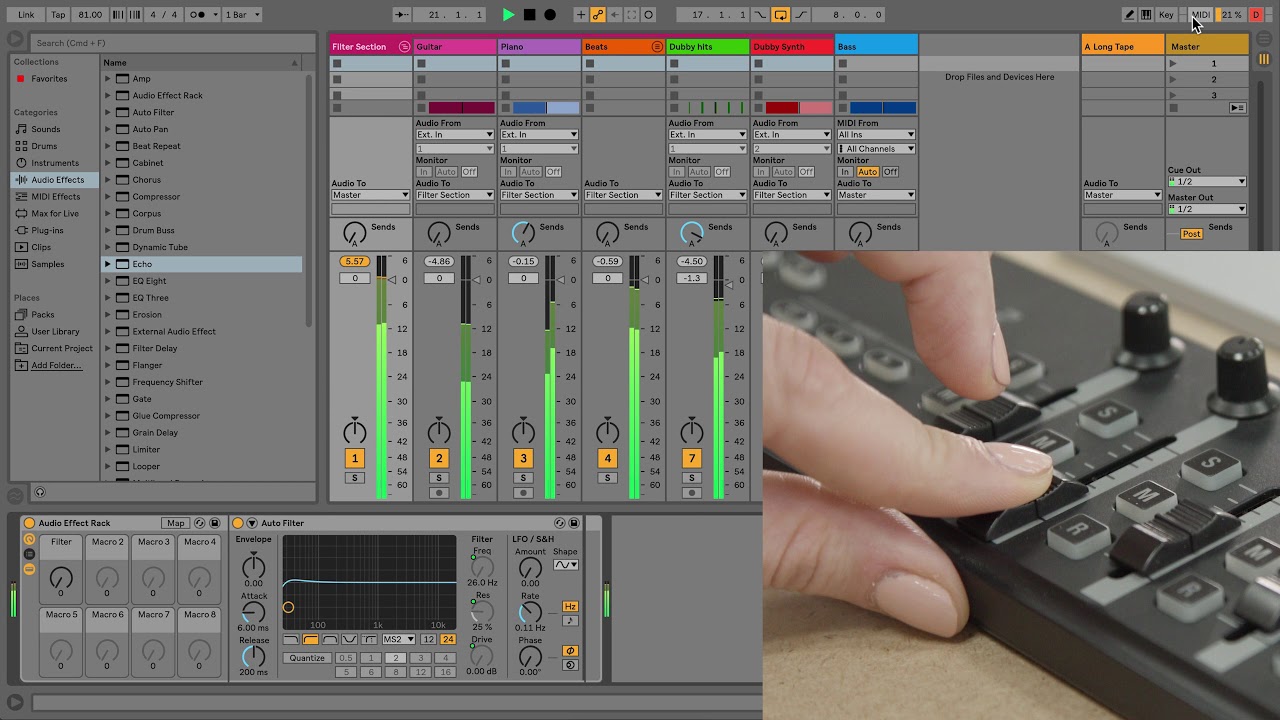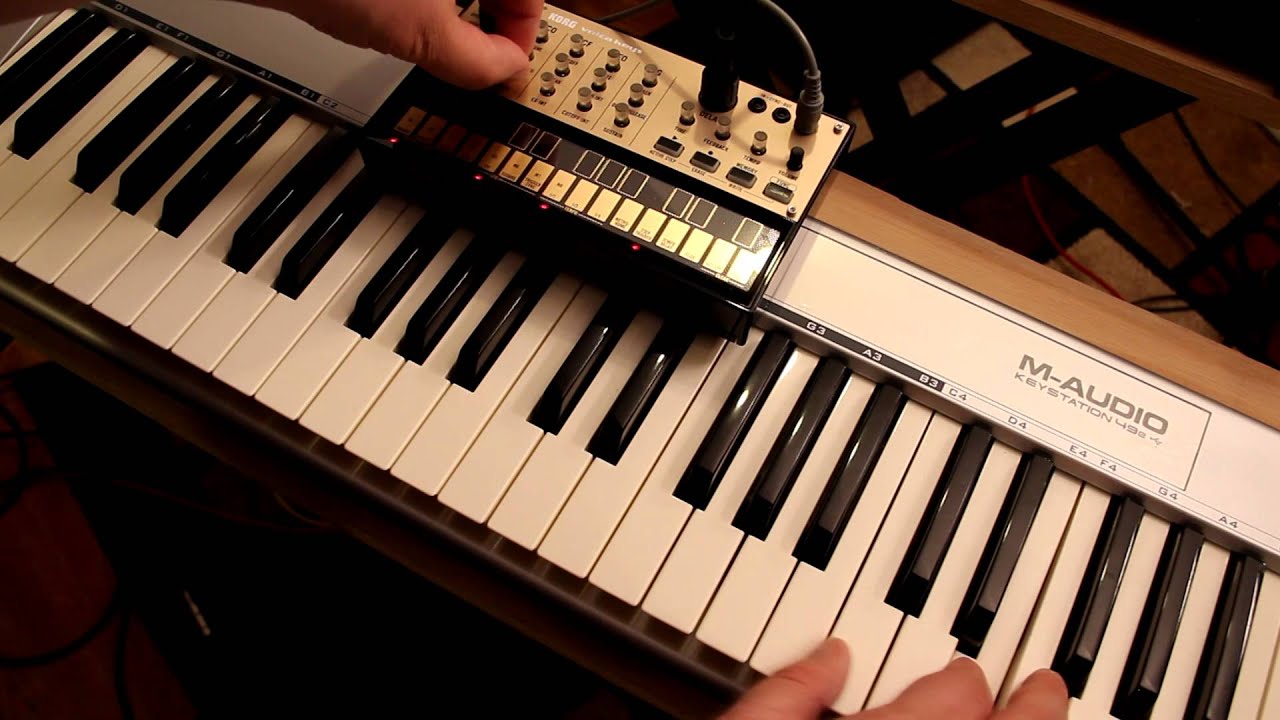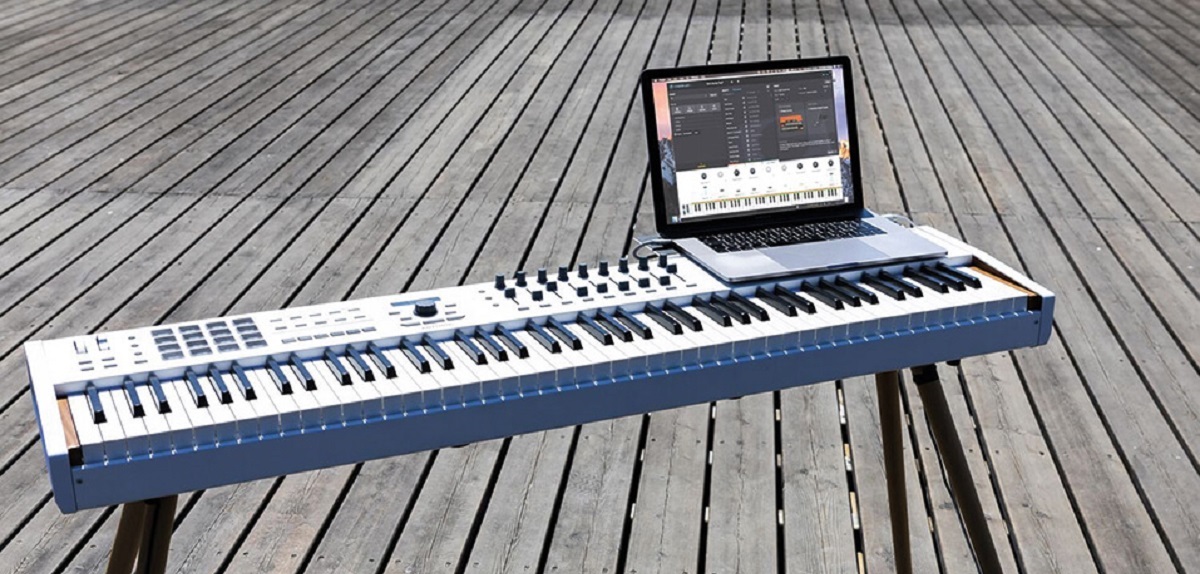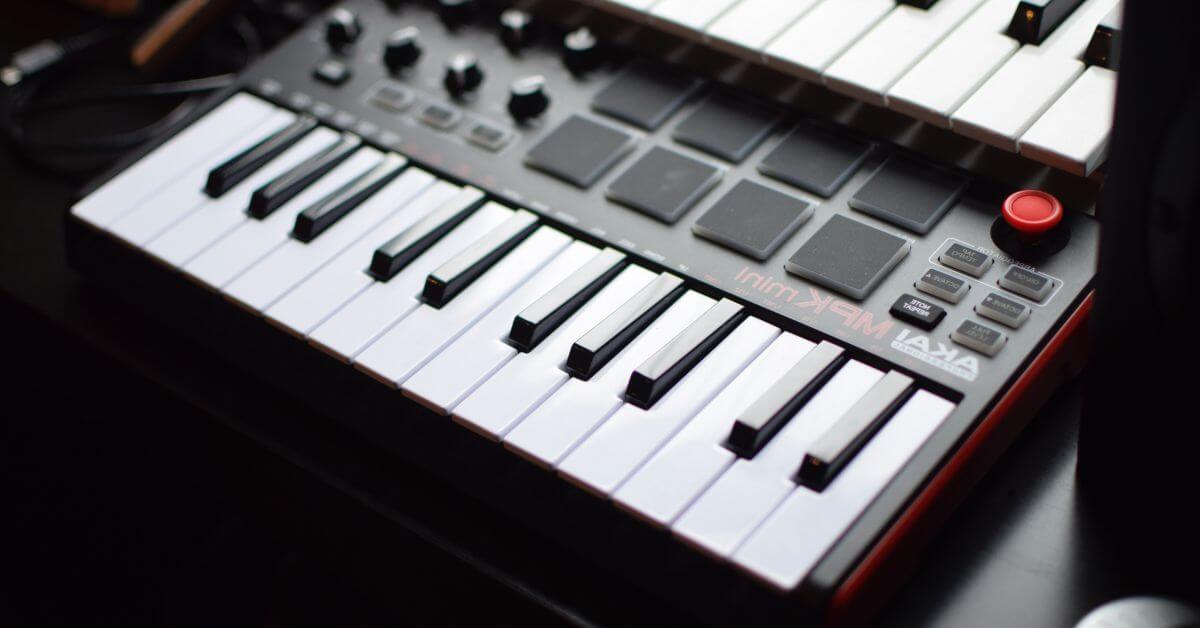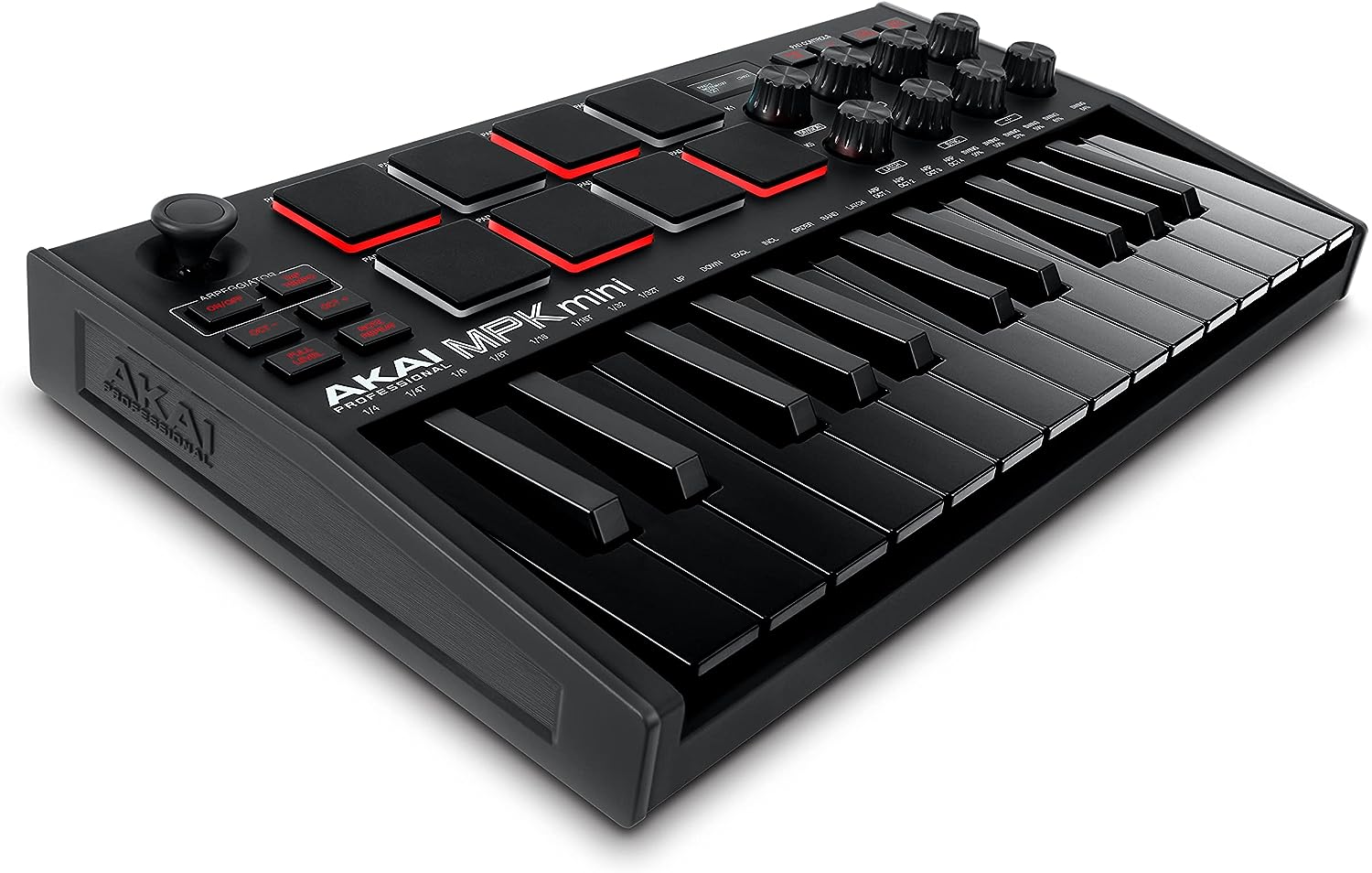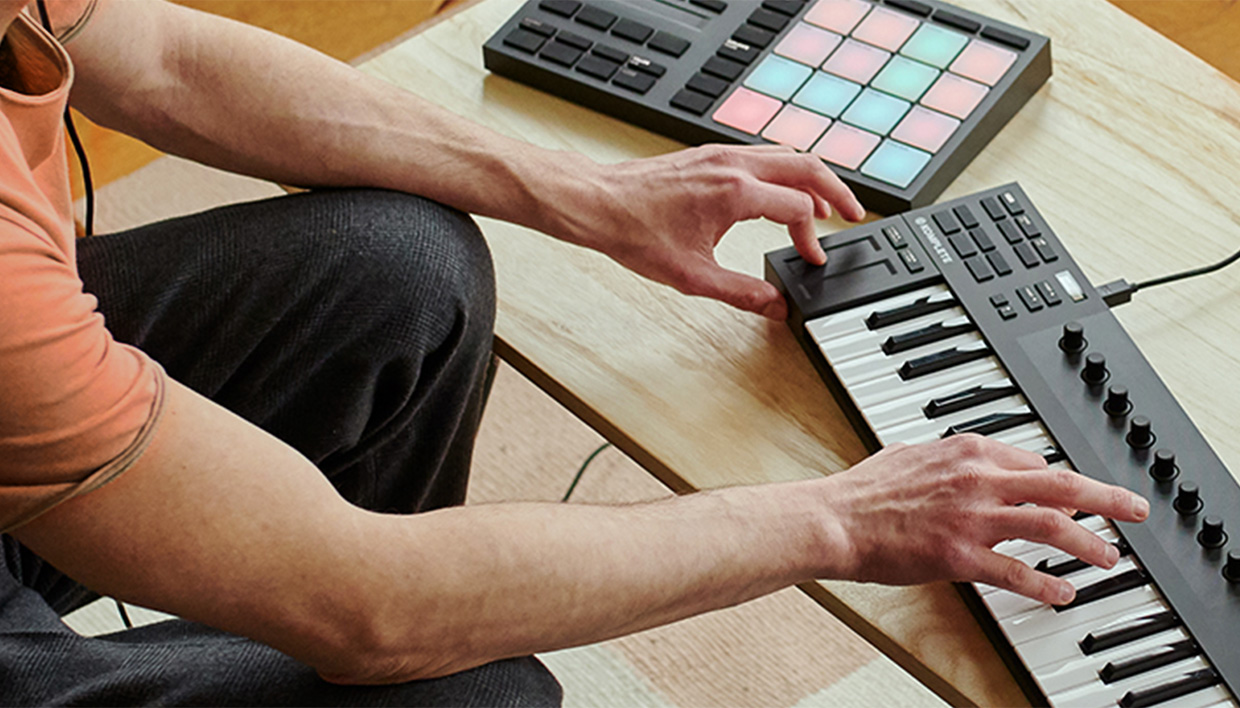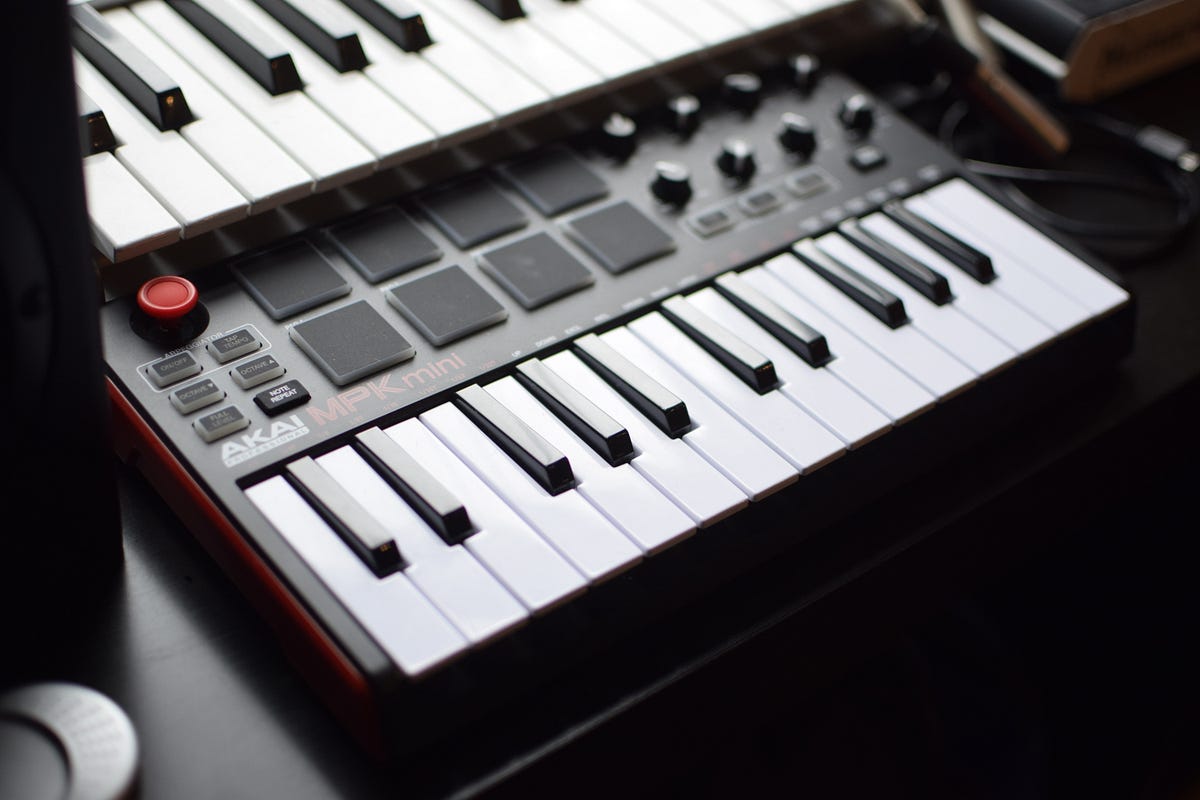Introduction
So, you've got yourself a MIDI keyboard, and now you're eager to unlock its full potential. Whether you're a budding musician, a seasoned composer, or simply a curious enthusiast, harnessing the power of your MIDI keyboard can open up a world of musical possibilities. In this guide, we'll walk you through the essential steps to get sound from your MIDI keyboard, from understanding the basics of MIDI to setting up your digital audio workstation (DAW) and selecting virtual instruments.
Embarking on this journey may seem daunting at first, but fear not – we're here to demystify the process and equip you with the knowledge and tools you need to make the most of your MIDI keyboard. By the end of this guide, you'll be well on your way to creating, recording, and editing your own music with confidence.
Whether you're aiming to lay down intricate piano compositions, craft electronic beats, or explore the endless sonic palette of virtual instruments, your MIDI keyboard can serve as the gateway to expressing your musical ideas in a digital realm. So, dust off those keys, fire up your creativity, and let's dive into the exciting realm of MIDI music production.
Understanding MIDI
MIDI, which stands for Musical Instrument Digital Interface, is a universal protocol that enables electronic musical instruments, computers, and other devices to communicate and synchronize with each other. Unlike audio signals, MIDI does not transmit sound; rather, it carries information about musical notes, dynamics, and other performance data. This means that when you play a note on your MIDI keyboard, it sends a series of messages to a connected device, such as a computer or a sound module, instructing it on what notes to play, how loud to play them, and for how long.
One of the key advantages of MIDI is its versatility. It allows for seamless integration between different types of musical equipment, making it possible to control and manipulate a wide array of sounds and parameters. Whether you’re triggering virtual instruments in a DAW, controlling hardware synthesizers, or synchronizing lighting effects for a live performance, MIDI provides a standardized language for musical devices to communicate and collaborate.
Another important aspect of MIDI is its non-destructive nature. This means that you can edit and manipulate MIDI data without altering the original performance. For example, you can quantize notes to correct timing errors, change the velocity of individual notes to adjust their dynamics, or transpose an entire musical passage to a different key, all without affecting the original recording.
Understanding MIDI messages, channels, and modes is fundamental to harnessing the full potential of your MIDI keyboard. By grasping the intricacies of MIDI, you’ll be able to take advantage of its powerful capabilities, whether you’re performing, composing, or producing music. Now that we’ve laid the groundwork for understanding MIDI, let’s explore the next steps in bringing your MIDI keyboard to life.
Connecting Your MIDI Keyboard
Before you can start making music with your MIDI keyboard, you’ll need to establish a physical connection between the keyboard and a device capable of interpreting MIDI data, such as a computer, synthesizer, or sound module. The most common way to achieve this is by using a MIDI cable or a USB connection, depending on the available ports on your MIDI keyboard and the device you’re connecting it to.
If your MIDI keyboard features traditional MIDI ports, typically labeled as MIDI IN and MIDI OUT, you can connect it to an external MIDI interface or a compatible MIDI-equipped device using standard MIDI cables. The MIDI OUT port on your keyboard should be connected to the MIDI IN port on the receiving device, and vice versa. This allows the MIDI data generated by your keyboard to be transmitted to the receiving device for interpretation and playback.
On the other hand, if your MIDI keyboard is equipped with a USB port, you can directly connect it to a computer or other USB-enabled devices using a USB cable. This method simplifies the setup process, as it eliminates the need for a separate MIDI interface and allows for seamless integration with music production software and virtual instruments.
Once the physical connection is established, you’ll need to configure the MIDI settings on your computer or external device to recognize and communicate with your MIDI keyboard. This may involve installing device-specific drivers, selecting the MIDI input and output ports within your music software, and ensuring that the MIDI connections are properly recognized and functional.
By successfully connecting your MIDI keyboard to a compatible device, you’ll pave the way for translating your musical ideas into digital commands that can be interpreted, manipulated, and transformed into expressive sounds. With the physical link in place, you’re now ready to delve into the realm of digital music production and exploration.
Setting Up Your DAW
Once your MIDI keyboard is physically connected to your computer or music production setup, the next step is to configure your digital audio workstation (DAW) to recognize and utilize the MIDI input from your keyboard. A DAW serves as the central hub for recording, editing, and producing music, and it’s where you’ll integrate your MIDI keyboard to trigger virtual instruments, record performances, and manipulate MIDI data.
First, ensure that your DAW is set to receive MIDI input from your keyboard. This typically involves accessing the DAW’s preferences or settings menu and designating your MIDI keyboard as a recognized input device. You may need to specify the MIDI input port corresponding to your keyboard and enable MIDI input monitoring to hear the sounds triggered by your keyboard in real-time.
Many modern DAWs offer streamlined workflows for integrating MIDI controllers, including MIDI learn functionality, which allows you to easily assign MIDI controls such as knobs, sliders, and buttons on your keyboard to parameters within the software. This facilitates hands-on control over virtual instruments and DAW functions, enhancing the tactile experience of music production.
Additionally, you’ll want to set up instrument tracks within your DAW to receive MIDI input from your keyboard. These tracks serve as containers for virtual instruments, allowing you to trigger and play them using your MIDI keyboard. Depending on your DAW, you may be able to browse and select virtual instruments directly within the software, or you can use third-party plugins and instruments to expand your sonic palette.
Understanding the routing and signal flow within your DAW is crucial for effectively utilizing your MIDI keyboard. By familiarizing yourself with track routing, MIDI channels, and instrument settings, you’ll be able to seamlessly integrate your keyboard into your music production workflow, enabling you to compose, perform, and experiment with different sounds and textures.
With your DAW configured to harness the capabilities of your MIDI keyboard, you’re now poised to explore the vast landscape of virtual instruments and unleash your creativity in the digital realm. The stage is set, and the tools are primed – it’s time to bring your musical visions to life.
Choosing and Using Virtual Instruments
Virtual instruments, also known as software instruments or VST (Virtual Studio Technology) instruments, are digital representations of traditional musical instruments, synthesizers, and sound modules that can be played and controlled within a digital audio workstation (DAW) using MIDI input. These versatile tools expand your sonic palette, allowing you to access a wide range of sounds, textures, and timbres without the need for physical hardware.
When selecting virtual instruments to complement your MIDI keyboard, consider the genres and styles of music you intend to create. Whether you’re drawn to realistic emulations of acoustic instruments, electronic synthesizers, or experimental soundscapes, there’s a vast array of virtual instruments available to cater to diverse musical preferences.
Popular categories of virtual instruments include:
- Sample-based virtual instruments: These instruments utilize recorded samples of real instruments, capturing their nuances and articulations to deliver authentic and expressive performances.
- Synthesizers: Ranging from classic analog emulations to cutting-edge digital synths, these instruments offer a wide spectrum of sonic possibilities, including lush pads, searing leads, and intricate sound design capabilities.
- Drum machines and percussion: Virtual drum instruments provide comprehensive kits, percussion ensembles, and electronic beats, empowering you to create rhythm-driven compositions with precision and flexibility.
- Orchestral and cinematic instruments: Ideal for composers and producers working on film scores, classical compositions, or ambient soundtracks, these instruments offer rich orchestral sounds, choir ensembles, and atmospheric textures.
Once you’ve chosen virtual instruments that resonate with your creative vision, it’s time to integrate them into your DAW and map them to your MIDI keyboard. Most DAWs allow you to load virtual instruments as plugins, enabling you to access and control them directly within your project. By creating MIDI tracks and assigning them to your chosen virtual instruments, you can begin playing, recording, and experimenting with diverse sounds using your MIDI keyboard as the controller.
Exploring the parameters and articulations of virtual instruments is essential for unlocking their full potential. Many virtual instruments offer adjustable settings for dynamics, expression, and modulation, allowing you to infuse your performances with nuance and emotion. Additionally, understanding the principles of MIDI mapping and automation within your DAW empowers you to sculpt and manipulate the behavior of virtual instruments in real-time, adding depth and character to your musical creations.
With a world of virtual instruments at your fingertips and your MIDI keyboard as the conduit for musical expression, you’re poised to embark on a sonic journey filled with endless possibilities. Let your imagination soar as you harness the boundless creativity offered by virtual instruments, shaping your musical landscapes with precision and passion.
Recording and Editing MIDI
Recording MIDI performances with your keyboard opens the door to capturing your musical ideas with precision and flexibility. Whether you’re laying down intricate melodies, crafting rhythmic patterns, or experimenting with harmonies, the ability to record MIDI data in your digital audio workstation (DAW) empowers you to capture expressive performances and refine them with meticulous editing.
To record MIDI from your keyboard, create a new MIDI track in your DAW and set it to receive input from your MIDI keyboard. Once armed for recording, any notes, chords, or controller movements you play on your keyboard will be captured as MIDI data within the DAW. This allows you to preserve your performances in a digital format, ready for further refinement and arrangement.
When recording MIDI, it’s important to consider the nuances of your performance, such as dynamics, timing, and expression. Many DAWs offer quantization options to align MIDI notes to a grid, ensuring rhythmic accuracy, while preserving the human feel of the performance. Additionally, features like MIDI overdubbing enable you to layer multiple passes of MIDI data, allowing for intricate and layered compositions.
After recording MIDI, the editing capabilities of your DAW come into play, offering a wealth of tools to refine and enhance your performances. You can individually adjust the timing and duration of MIDI notes, modify their velocities to control their dynamics, and fine-tune the articulations and phrasing of your musical passages. This level of precision empowers you to sculpt and perfect your MIDI performances with meticulous attention to detail.
Beyond note editing, MIDI also encompasses control data for parameters such as pitch bend, modulation, and sustain. Editing these controller messages allows you to add expressive gestures and articulations to your performances, infusing them with the subtleties and nuances of live instrumentation.
Furthermore, the concept of MIDI automation enables you to dynamically control and modulate various aspects of virtual instruments and effects over time. By drawing and manipulating automation curves within your DAW, you can create evolving textures, sweeping filters, and expressive swells, breathing life and movement into your MIDI compositions.
Recording and editing MIDI performances with your keyboard is a gateway to refining your musical expressions with precision and creativity. Harnessing the capabilities of your DAW’s MIDI editing tools empowers you to shape and mold your performances, transforming raw ideas into polished compositions that reflect your artistic vision.
Troubleshooting and Tips
While delving into the realm of MIDI music production with your keyboard, you may encounter occasional challenges and nuances that require troubleshooting and optimization. Here are some valuable tips and solutions to common issues that can arise when working with MIDI keyboards and digital audio workstations:
- Latency and Performance: If you experience noticeable delays between pressing keys on your MIDI keyboard and hearing the sound from your virtual instruments, adjusting your DAW’s audio buffer size can help minimize latency. Additionally, optimizing your computer’s performance settings and ensuring that your audio drivers are up to date can contribute to smoother real-time performance.
- MIDI Mapping and Assignments: Familiarize yourself with the MIDI mapping capabilities of your DAW to assign specific functions and parameters to the controls on your MIDI keyboard. This allows for intuitive and customized control over virtual instruments, effects, and DAW functions, enhancing your workflow and creative expression.
- Velocity and Expression: Experiment with the velocity sensitivity and expression capabilities of your MIDI keyboard to imbue your performances with dynamic nuances. Adjusting velocity curves and sensitivity settings can tailor the responsiveness of your keyboard to suit your playing style and musical preferences.
- Channel and Routing Configuration: Understanding how MIDI channels and routing work within your DAW is essential for managing multiple MIDI devices and virtual instruments. Ensure that MIDI channels are properly assigned and that MIDI input and output ports are configured to facilitate seamless communication between your MIDI keyboard and your software instruments.
- Backup and File Management: Regularly back up your MIDI projects and associated files to prevent data loss. Organize your project folders and maintain a structured file management system to streamline collaboration and future revisions of your compositions.
- Exploration and Experimentation: Embrace a spirit of curiosity and experimentation when exploring the capabilities of your MIDI keyboard and virtual instruments. Delve into sound design, modulation, and performance techniques to uncover unique sonic landscapes and musical expressions.
- Community and Resources: Engage with online communities, forums, and tutorials dedicated to MIDI music production and keyboard techniques. Leveraging the collective knowledge and experiences of fellow musicians and producers can provide valuable insights, troubleshooting tips, and inspiration for your creative endeavors.
By proactively addressing technical challenges and embracing best practices, you can optimize your MIDI music production workflow, elevate your performances, and unleash the full potential of your MIDI keyboard as a versatile and expressive musical tool.
Conclusion
Congratulations on embarking on the journey to unlock the sonic potential of your MIDI keyboard. Throughout this guide, we’ve navigated the essential steps to harness the power of MIDI, from understanding its fundamental principles to integrating your keyboard into a digital music production environment. By exploring the intricacies of MIDI communication, connecting your keyboard to a digital audio workstation, and leveraging virtual instruments to expand your sonic palette, you’ve gained the foundational knowledge to embark on a creative odyssey in the realm of MIDI music production.
As you continue to explore and experiment with your MIDI keyboard, remember that the true magic lies in the synergy between technology and creativity. Your keyboard is not merely a collection of keys and controllers; it’s a conduit for your musical ideas and expressions, a gateway to sculpting emotive melodies, captivating rhythms, and evocative soundscapes.
Embrace the nuances of MIDI performance, delve into the boundless array of virtual instruments, and seize the opportunity to craft compositions that resonate with your artistic vision. Whether you’re a seasoned composer, a budding producer, or an inquisitive enthusiast, your MIDI keyboard stands ready to accompany you on a voyage of sonic exploration and self-expression.
Remember to draw inspiration from the wealth of resources and communities dedicated to MIDI music production, and don’t hesitate to seek guidance and share your discoveries with fellow creators. The journey ahead is as much about learning and collaboration as it is about individual expression and innovation.
With each keystroke and modulation, with every note and parameter adjustment, you’re weaving a tapestry of musical narratives and sonic landscapes. Embrace the opportunities for growth, experimentation, and self-discovery that await you in the world of MIDI music production, and let your MIDI keyboard be the vessel through which your musical imagination takes flight.
May your musical odyssey be filled with inspiration, innovation, and the joy of creating music that resonates with your soul. The world of MIDI music production eagerly awaits your unique voice and artistic contributions. So, let the journey continue, and may your melodies echo through the digital realms with passion and purpose.







